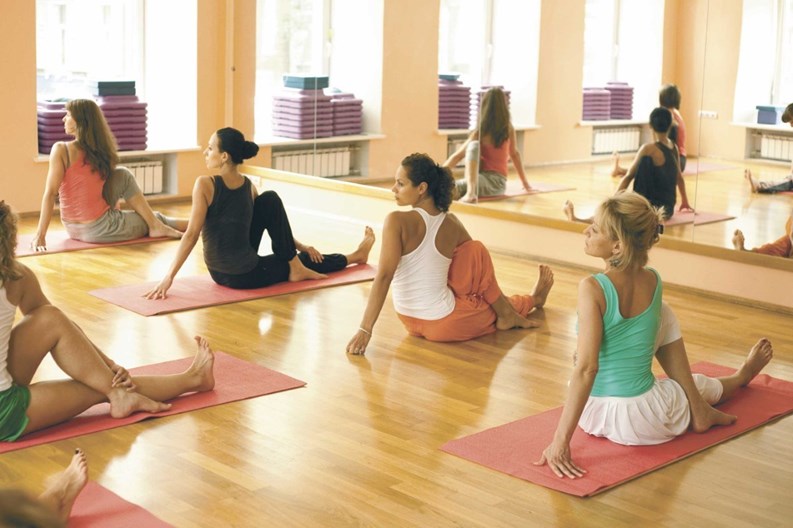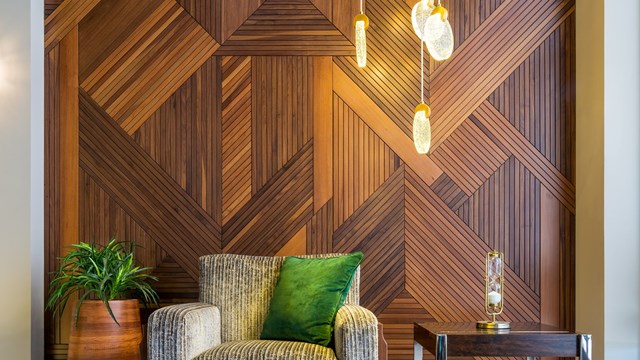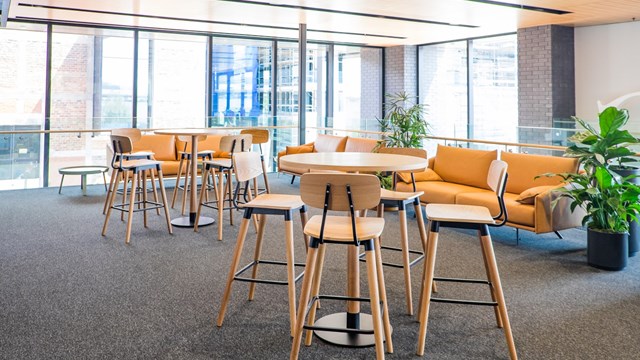Like any major project in a co-op or condominium, installing a gym is made up of two separate yet equally important parts: The brass tacks of planning and executing the project, and the politics of running it through the board and residents.
And as with most projects—especially costly 'lifestyle' amenities—the politics is the hard part.
“With all the negotiating back and forth and rounds of approvals, putting in the gym took about five years,” recalls Patricia Durbin-Ruiz, former manager of the fitness center at The Belaire, a 50-story condominium tower at 524 East 72nd Street in Manhattan. The resistance among some of the owners at The Belaire was particularly intense because it was to be massive—and expensive, including the upgrade of an existing indoor pool in addition to the installation of the gym.
But the Belaire's board persevered through the resistance because they were certain the fitness center would be more than a luxury lifestyle amenity for their building—it would be essential to keep the building competitive in the marketplace. They were reminded of that every day by the activity across the street: a rental tower was being converted to a condominium called Miraval Living that boasted a luxurious fitness center and pool. “The Belaire had a beautiful building,” says Durbin-Ruiz, “but no gym.”
Staying Competitive
According to Jeffrey Heidings, president of Siren Management Corp., “More than five years ago, a gym was a plus. Now, If you don’t have a gym you are not competing. It is expected.” In August, The New York Times asked Prudential Douglas Elliman President and CEO Dottie Herman what buyers are looking for. After “well-priced,” she said, “they want buildings with gyms.”
Putting an actual number to the value a gym adds is impossible, according to Rob Mellman, a managing agent for Orsid Realty Corp. in Manhattan: “It’s not something you can quantify in terms of the payback on the investment. It’s a question of curb appeal.” That said, Gregory Cilek, owner of Iowa Sports, a major designer and operator of fitness clubs in New York, gave it a shot: “I got a very experienced broker to estimate the value [an in-house gym] adds to each apartment in a building,” recalls Cilek. “I was told around $15,000.”
Some buildings, like The Belaire, assess the owners for the cost of the gym (the primary reason their process took so long). Most take the money for the installation from the reserve fund and charge the shareholders who join a yearly membership fee to recoup that initial expense and fund the ongoing operation.
The build-out of a gym without a shower or sauna ranges upward from approximately $40,000. Some gyms pay off their initial investment in a few years and cover the operating expenses, and some do not.
Is It Worth It?
“We have a very successful fitness center,” says Albert Lasher, head of the gym committee, a group he gathered to research and pitch the project, for 875 West End Avenue, a 100-unit co-op on Manhattan's Upper West Side. The committee persuaded the board to draw $38,000 from the reserve fund to install a gym in a vacant space in their basement.
The committee figured they’d be able to pay that money back to the reserve in five years, assuming 25 percent of the building's residents would join. (“It was guesswork,” says Lasher.) They charged a one-time sign-up fee of $300 and $250 per year for the first person in a unit and $150 for each additional unit resident.
“We paid it back in less than two years,” says Lasher. Sixty-five of the building’s100 units belong to the gym—84 residents altogether. The early success enabled the committee to cut the yearly fee in half, to $125. “We still cover our operating costs,” says Lasher, “and allocate about $3,000 a year for equipment replacement—which hasn’t been necessary yet—and continue to contribute $2,000 to $3,000 a year to the reserve fund.”
The Bayard House, a 27-story, 156-unit cooperative at 203 East 72nd Street in Manhattan is another success story. Real estate developer Joel Silver, a board member at the Bayard, helped get the gym project done 10 years ago, converting a 500-square-foot room in the basement into a gym with a budget of a mere $30,000 taken from the reserve fund. Residents pay $225 per year for membership.
“The gym has about 100 members today,” says Silver. “We’re well ahead of the game. The membership dues more than replenishes the reserve that we took out for it, and pays for the upkeep.” The Bayard, he adds, “has a healthy turnover of apartments and 90 percent of new buyers join the gym.”
Building the Gym
Buying workout equipment is the easiest part of the build-out. “A lot of people think they are going to take the bike room, put equipment in it, paint the walls, and call it a day,” observes Thom Jackowski, commercial sales consultant with GymSource, a leading gym equipment retailer. “In New York City, that is not going to cut it.”
The first thing you need to need to consider, advises Jackowski, “is what construction and code obstacles you might need to overcome to pull the project off.” Potential problems include open asbestos, lead paint on the walls, mold or fungus problems, and particularly in basement spaces, pipes that sweat in the summer. Basement spaces also have the issue of exposed pipes, conduits and drain lines. As older buildings replace systems, they often leave old piping, electrical conduits and phone lines in place. Each should be tested and removed if inactive.
HVAC is perhaps the most important system in the facility. To meet city code, the gym space must have 15 percent fresh air flowing into the space. If the proposed space for the gym is not already equipped with central air conditioning, ducting will need to be installed if the room does not have a window. If there is a window, you need to install a unit with adequate power.
“You’re looking to maintain 68° year round—that often means running a cooling system practically year round,” says Jackowski, both for safety and comfort—to keep members coming back to the club. If there is any sort of landing or ledge outside the window on which to set a compressor, Heidings recommends a split system, available for around $2,000.
Another important code issue with which the gym room must conform is egress—providing a clear and unencumbered path out of the room if there is an emergency such as a fire or loss of power.
Bring in a Pro
To get a clear and objective evaluation of the condition of the room, and to get an idea of the construction costs entailed, it’s best to consult an architect right up front, says Jackowski. “If you find that your construction costs are very high, you may just say this is just something we cannot afford right now—or ever,” unless or until there is a more suitable space available in the building.
Some of the major design challenges, according to interior designer Jonathan Baron of Manhattan-based Baron Design Inc., is inclusion of light. Most often spaces designed for this purpose are in basements or underutilized rooms, and may not have natural light to make the space breathable. Lighting design, therefore, becomes very important, Baron says. Many gyms find that fluorescent in fixtures aimed upward to soften the light are an effective and inexpensive alternative to high-end lighting.
You should also note if the floor has adequate space and structural capacity for both the equipment and the occupants, he says.
Another element to consider, say the designers, is noise—both kinds: vibration caused by things like treadmills, which primarily travels vertically downward; and audible, like the clanging and dropping of weights or the thumping of runners. A thick rubber floor like the ones commonly used in commercial gyms addresses both. Rubber flooring for a 600-square-foot gym costs around $5,000, say the pros.
A particularly pernicious vibration problem can be solved by laying a floating floor on top of the existing and then putting rubber over that, plus sealing and caulking every edge of the space as well as every pipe intrusion and structural column. A dropped ceiling filled with insulation will keep noise from traveling upward.
According to Wendy Bosalavage, president of American Leisure, a designer and operator of fitness centers in luxury condominiums, “Rubber flooring comes at different price points. There is a company we work with called Mondo, for example, which has the capability to deliver custom colors and complement the upholstery on the equipment.”
The gym must have mirrors on approximately half the wall space in the gym, corresponding to the placement of the stretching/ab area and the apparatus. The price range for mirror panelling is typically from $3,000 to $5,000. Lastly, a computerized electronic lock on the door not only keeps the room secure, but keeps track of who is in the room and when, in case anything is damaged or stolen. Plastic keycards, which can easily be passed around to non-member residents, have been replaced by palm or fingerprint scanners, available for under $1,000.
Layout and Design
A well thought-out private gym provides a full-body workout, which includes warm-up, stretch, cardio, strength training and cool-down. According to consultants, cardio equipment will generally be the most used. A 500-600-square-foot gym will typically have two treadmills (approximately $2,000 each), two elliptical machines ($1,500 each), a recumbent bike ($2,000), an upright bike (under $2,000), a multi-station weight apparatus (around $5,000) and at least two racks of free weights and two benches (under $1,000). A popular, fabulously versatile new apparatus is the functional trainer (around $3,500), which uses two adjustable-height and width pulleys attached to individual weight stacks and offers a wide range of exercises.
The gym above, containing all commercial grade brand-name equipment, including delivery and installation, should come to about $30,000 plus tax. .
It’s important, says Baron, to decide what’s necessary and what’s not. For example, consider whether adding a shower/locker room is essential. Perhaps residents would prefer using their own apartments for that function rather than the in-house gym, where maintenance could prove expensive or difficult. Other concerns are consulting with an attorney and insurer on liability issues, and making sure the facility is secure using safety-conscious materials and products.
Building insurance almost always covers injury and mishaps in the gym (just as it does in the laundry room), as long as no one under 16 is allowed admission. No additional policy is usually required—though of course it's wise to double-check with your building's insurance carrier to make absolutely sure.
The life span of equipment in a gym varies from piece to piece. Jackowski estimates that in a co-op or condo gym, conservatively, treadmills can be counted on to last about five years, elliptical machines about seven and bikes about 10. Weight machines last indefinitely, requiring only occasional reupholstering and replacement of pulleys and cams. Regular professional maintenance will help extend the life of all the equipment. Contracts, usually costing around $1,200 a year, include inspection, adjustment and lubrication of all moving and mechanical parts.
In addition to quarterly maintenance visits, the room has to be cleaned every day. This is typically done by existing building staff, the chore includes wiping down all the equipment with disinfectant, vacuuming the floor, emptying the garbage and cleaning the bathroom if there is one.
Adding TV screens to each of the six cardio pieces above would add at least $6,000 to the cost of the package. Jackowski says about half the gyms he equips go without any TVs at all to save on cable bills, figuring people bring their iPods for entertainment. Some have just two BestBuy or Costco-bought flat screens on the wall, using their speakers to produce the sound. Other more extravagant buildings spend tens of thousands on individual touchscreens with wireless internet as well as cable TV.
You’ve Built It: Now Make Sure They Come
In order to let residents know that their new gym is open and fully operational, “Do as many kickoff events as you can,” advises Cilek. “You’ve got to get a lot of energy down there.” As soon as the gym is finished, do a wine and cheese ribbon-cutting ceremony. Later on, bring in a trainer to lead several training sessions for four or five shareholders at a time.
“The building can offer regularly scheduled yoga, stretch and pilates mat classes,” says Durbin-Ruiz, owner of Moving Strength, a pilates/fitness center on the Upper East Side. Offering pilates classes is especially effective in winning new members to the gym, says Durbin-Ruiz, because while yoga studios that offer classes without membership abound in the city, “there are very few places people can go to take pilates classes without joining an expensive gym like Equinox or New York Sports Club.”
Yoga and pilates classes can generate a modest extra income for the building—and at the same time help keep shareholders and tenants healthy.
“We are in our fourth year of a yoga program,” says Lasher, “and we’ve just begun a Fitness After Fifty program that seems to be going well.”
The bottom line is that not only can a well-designed, well-maintained gym facility add value to your building, it can help boost community spirit as residents bond over the iron, and it helps keep your owners and shareholders healthy. And that's a winning equation.
Steve Cutler is a freelance writer living in New York City. He also served on a gym committee for his own co-op board.







Comments
Leave a Comment